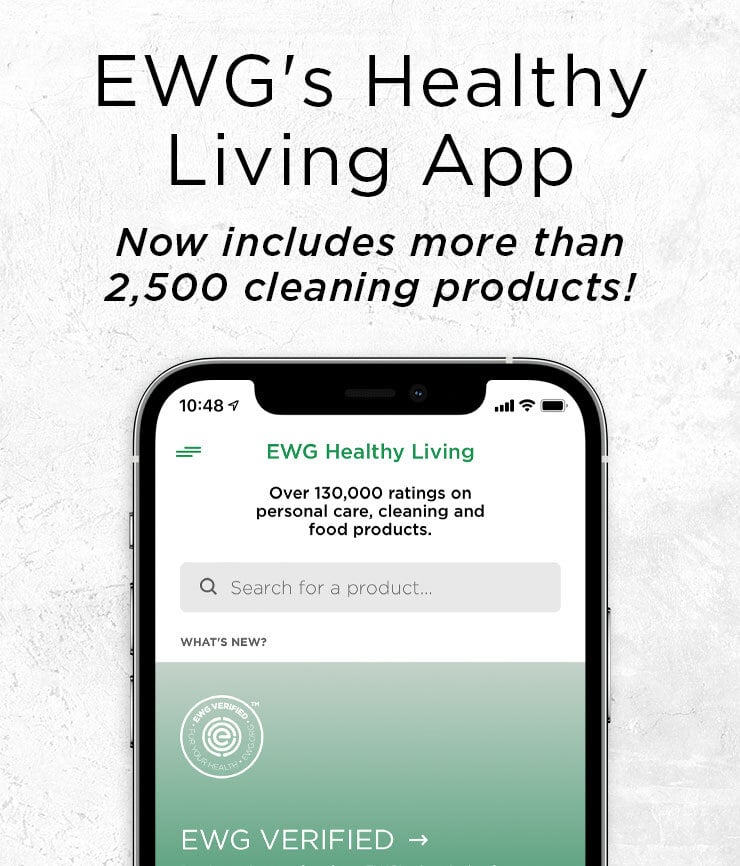Less Reliable
American Humane Certified
Specifies minimum amount of space per animal to allow for natural behaviors.
Animals can be confined in cages or crates.
No requirement for outdoor access.
- Permits use of antibiotics to prevent diseases associated with crowded or unsanitary conditions.
No growth hormones.
Painful physical alterations must be done in a manner “to minimize pain and stress.”
Audited by an independent third party.
Annual on-farm inspections.
No audits to ensure humane slaughter.
To ensure the meat or dairy products you purchase are from producers that set humane standards to minimize pain, limit suffering and provide humane living conditions, look for these certifications instead:
To learn more, visit the American Humane Certified.
Farmed Responsibly ASC Certified
Requires traceability for each animal from ocean to plate.
Strong third-party verification.
No antibiotics given to healthy fish, and a veterinarian must certify disease before treatment is allowed.
No use of critically important antibiotics, as defined by the World Health Organization, allowed.
Does not allow use of transgenic fish.
GMO feed allowed
To learn more, visit the Aquaculture Stewardship Council.
USDA Process Verified
The “USDA Process Verified” shield on a meat label indicates the U.S. Department of Agriculture has verified whatever claim the shield is attached to. By itself, the shield does not indicate anything specific about the meat product. It is meaningful only when it is used in conjunction with another claim such as “grassfed” or “not fed antibiotics.”
Indicates that the USDA has conducted a paperwork audit, followed by an on-farm audit to verify the producer’s claims firsthand and ensure producers are following their own policies.
No federal standard for various claims. Producers’ practices vary, and they can write their own standards for each claim.
Annual on-farm inspections.
To learn more, visit the Process Verified Program.
No Antibiotics
“Raised without antibiotics,” “no added antibiotics ever,” “no antibiotics administered,” “no antibiotics,” or “no antibiotics added”
These terms imply that the animal never received antibiotics.
- To use these terms, producers must show the U.S. Department of Agriculture documentation that animals never received antibiotics in their feed, water or by injection.
- USDA defines “no antibiotics” on its website to mean red meat and poultry that “were raised without antibiotics.”
- In 2002, the USDA proposed to define “raised without antibiotics” as livestock that “never received antibiotics from birth to harvest,” but never issued those standards.
No regular on-farm inspections to verify correct usage of this claim.
“Raised without subtherapeutic antibiotics,” “responsible use of antibiotics” or “not fed antibiotics”
Imply antibiotics were not used on healthy animals to speed growth.
To use these terms producers must show the USDA appropriate documentation.
Animals may have received antibiotics for other reasons, including prevention of disease caused by overcrowding.
- Some producers may follow the World Health Organization’s recommendations and limit antibiotics important in human medicine.
- Without a federal standard, practices vary. In 2002, the USDA proposed to define “no subtherapeutic antibiotics added,” but never issued those standards.
No regular on-farm inspections to verify correct usage of this claim.
To ensure that producers are not using antibiotics – or if they are using them, only to appropriately treat infection – look for products with these seals from rigorous third-party certifiers instead:
No Beta Agonists
“No beta agonists” or “no growth promoters”
These terms imply that adrenal hormones were not given to promote the development of lean muscle instead of fat in the animal. Treated animals can develop health problems such as increased heart rate and hoof defects. European and Chinese authorities do not allow beta agonists in meat.
The U.S. Department of Agriculture requires documentation from producers to use this term.
No federal standard.
No regular on-farm inspections to verify correct usage of this claim.
To ensure that producers are not using antibiotics – or if they are using them, only to appropriately treat infection – look for products with these seals from rigorous third-party certifiers instead:
Grass-fed
Implies animals were fed a diet of natural grass and other forage – not grain.
The U.S. Department of Agriculture requires documentation from producers to use this claim.
It can often include other healthier practices not associated with industrially produced meat, such as more range time for livestock, less crowded conditions and local butchering.
- No federal standard. In January 2016, the USDA withdrew its grass-fed standard that required animals “must have continuous access to pasture during the growing season.”
Despite the withdrawal, the USDA still requires proof of access to pasture, and that animals’ diets were “derived solely from forage” and they were not “fed grain or grain by-products,” in order to approve use of this claim.
Does not necessarily mean that the animals spent their entire lives in pastures or on rangeland.
No regular on-farm inspections to verify correct usage of this claim.
To ensure the meat or dairy products you purchase require that animals eat a diet exclusively of forage and spend most of their time on pasture, look for these certifications instead:
Heritage Breeds
The term “heritage” refers to historic animal breeds raised before industrial producers developed modern breeds that grow faster and mature earlier.
The U.S. Department of Agriculture requires documentation from producers to use this claim.
Preserves genetic diversity and prevents extinction.
Generally less susceptible to diseases based on their genetic vigor and the fact that they are typically raised outdoors in less crowded environments.
Some meat producers use the terms “heritage” or “heirloom” loosely and raise animals that are a mix of historic and modern breeds.
- While the Livestock Conservancy has worked to create a definition of “heritage” and maintains a list of heritage breeds for poultry and livestock, they do not certify producers and, currently, there is limited oversight on use of the term.
No regular on-farm inspections to verify correct usage of this claim.
Organic Seafood
Implies the seafood was raised organically.
The federal government doesn’t presently allow any domestic seafood to be certified as organic, although fish labeled as organic can be legally imported into the United States.
Fish and shellfish products labeled as organic presumably comply with an international certification standard, though it may be difficult to find out what those standards require. A reasonable standard should require practices that minimize the toll of aquaculture to the environment, and limit the use of antibiotics, dyes and other harmful additives.
Seafood marketed as “organic” is generally farm-raised.
Pasture Raised
Implies animals were raised in a pasture where they can roam freely outdoors and are able to eat grasses and other foods their bodies are adapted to digest.
The U.S. Department of Agriculture requires documentation from producers to use this term.
- No federal standard. In 2002, the USDA proposed to define “pasture raised” to mean animals with “continuous and unconfined access to pasture throughout their life cycle,” but never issued those standards.
No regular on-farm inspections to verify correct usage of this claim.
To ensure the meat or dairy products you purchase are from pasture-raised animals, look for these certifications instead:
Not treated with rBGH/rBST
This designation means products come from animals that have not been treated with the recombinant bovine growth hormone (rBGH), also known as recombinant bovine somatotropin (rBST). This genetically engineered, Food and Drug Administration-approved hormone artificially increases milk production by 10 to 15 percent. The European Union has banned the use of rBGH to prevent the human health risk (it may boost insulin-like growth factor) and animal health risks (animals may have more infections on rBGH).
The FDA requires documentation from producers to use this term.
The FDA considers use of the term “r-BGH-free” to be false, since all milk contains natural growth hormone.
No federal standard, however the FDA did publish guidance on the voluntary labeling of dairy as “not treated with rBGH.”
No regular on-farm inspections to verify correct usage of this claim.
To ensure the meat or dairy products you purchase are from pasture-raised animals, look for these certifications instead:
Sustainable Seafood
Implies wild and farmed fish are from sustainably managed fisheries.
- The U.S. Department of Commerce legally enforces national standards to prevent overfishing and ensure sustainable fishery management.
This term is more meaningful if the seafood comes from a U.S. fishery.
Due to a high amount of fraud, without a certification, consumers can’t always be sure to what extent these fish populations are actually being protected.
Remember to steer clear of high mercury seafood, like swordfish, which may be labeled as sustainable.
For detailed sustainability ratings, consult the Monterey Bay Aquarium’s Seafood Watch program, which is the most rigorous rating for sustainable seafood choices. Unfortunately, the Seafood Watch program doesn’t certify specific products. To ensure the fish you purchase is sustainable look for this certification:
Vegetarian Fed
This claim implies that the animals were not fed meat byproducts, which is common in industrial practice.
 Producers have to submit documentation to the U.S. Department of Agriculture proving that animals were fed only vegetarian feed.
Producers have to submit documentation to the U.S. Department of Agriculture proving that animals were fed only vegetarian feed.This label claim has no legal definition.
 Chicken, turkeys and other omnivores are still allowed to forage naturally for insects and grubs.
Chicken, turkeys and other omnivores are still allowed to forage naturally for insects and grubs.No regular on-farm inspections to verify correct usage of this claim.
Wild-Caught/Wild Fish
The term “wild” on a fish or shellfish label suggests that the fish lived in the wild and was caught in the wild.
 Can be more ecologically responsible than farmed fish, particularly when harvested in the United States where local boards set harvest levels to ensure continued supply.
Can be more ecologically responsible than farmed fish, particularly when harvested in the United States where local boards set harvest levels to ensure continued supply.The Food and Drug Administration has no rules to define these claims, so practices vary.
Fraud, mislabeling and the substitution of one species of fish for another is high within the seafood industry, and consumers can’t always be sure that fish labeled as such were actually wild-caught.
No regular inspections to verify correct usage of this claim.
Independent verification is necessary to ensure this claim is true.
To ensure the fish you purchase is wild-caught, look for this certification:



 Skin Deep
Skin Deep
 Cancer Prevention Within Reach
Cancer Prevention Within Reach
 Shopper's Guide to Pesticides in Produce™
Shopper's Guide to Pesticides in Produce™
 Guide to Healthy Cleaning
Guide to Healthy Cleaning
 EWG's Tap Water Database
EWG's Tap Water Database
 Food Scores
Food Scores








